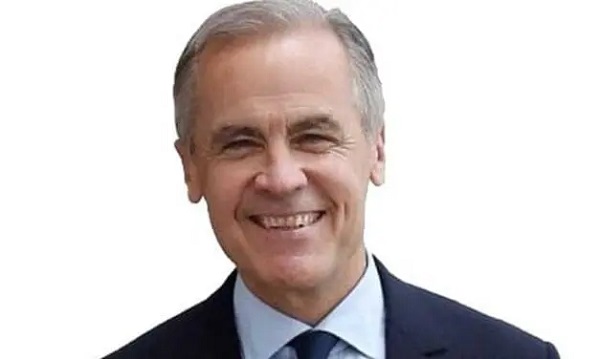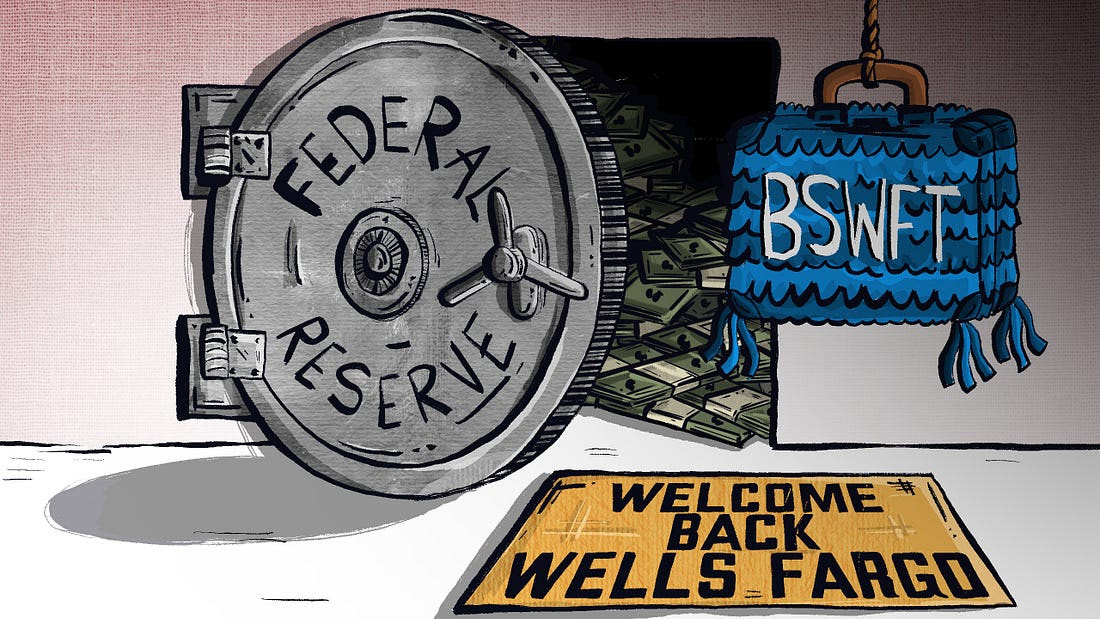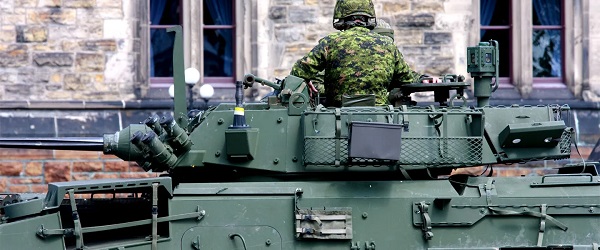International
Trump and the 1960s Assassinations:
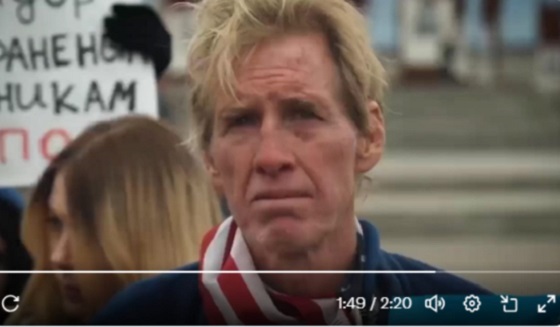
News release from Who Is Robert Malone
On September 15, 2024, the American people witnessed another attempt on the life of Donald Trump, a former President and a current presidential candidate. A candidate who the deep state, the administrative state, and the globalists profoundly fear. Simply stated, the blob views President Trump as a threat to both the current AND the new world order.
As I have been watching the news, the alternate news, reading the would-be assassin’s rantings on his now-deleted Facebook and X accounts, it is hard not to think back to that period in American history in the 1960s when it appears that the government decided that it needed to remove certain political actors from the chessboard.
In our recent book, PsyWar: Enforcing the New World Order, we wrote the following about this dark time in American history:
“The PsyWar campaign on America goes back decades. Senator Rand Paul stated recently: “There was a coup, and we lost our government”
The day of that coup was November 22, 1963. That was the day that John F. Kennedy was assassinated in Dallas, Texas. That was the day the U.S. government turned against its own people and began a PsyWar campaign against all of us. We just didn’t know it yet. Nothing has been the same since.
It has taken over fifty years to realize the extent of this PsyWar campaign fully, but now there is no denying it. A new book titled: “The Assassination of President John F. Kennedy: The Final Analysis: Forensic Analysis of the JFK Autopsy X-Rays Proves Two Headshots from the Right Front and One from the Rear” documents that President Kennedy was almost surely assassinated by the U.S. government, who also led the cover-up and the ensuing propaganda/PsyWar campaign regarding the events of his death. The author and scientist, Dr. David W. Mantik, uses modern imaging to prove that the wound in the president’s throat and the massive blow-out in the back of his head involved frontal bullet wounds. As Lee Harvey Oswald supposedly shot the President from behind the motorcade, this analysis provides data which refute the government’s analysis that he was the lone assassin does not hold up to scrutiny. This book presents clear and compelling testimonial and documentary evidence that the surgeons performed pre-autopsy surgery on the President’s head to remove evidence of the forehead bullet, as well as to gain access to his brain. Hence, they were able to “sanitize the crime scene” by removing bullet fragments as well as bullet tracks in the brain tissue. The forensic evidence is clear that the CIA, the FBI, and/or the U.S. Secret Service have been involved in and covered up the assassination of a sitting U.S. president [1].
As good as the forensic evidence is, there are now a vast number of books on the circumstances leading up to and after the assassination that reveal that Lee Harvey Oswald did not kill President Kennedy. In fact, there are books, studies, publications, and video reanalyzing the Warren Commission Report hearings and Exhibits, as well as the House Select Committee Report, records from the Assassination Records Review Board, the National Archives and Records Administration records, and testimony from many eyewitnesses (including the many witnesses, who were not allowed to speak to the Warren Commission). Taken together, this evidence works to prove that the Warren Commission Report was a sham with a predetermined conclusion and was never meant as a real investigation to determine who assassinated President Kennedy. One book that stands out as thorough and compelling on this subject is “The JFK Assassination Evidence Handbook” [2].
Colonel L. Fletcher Prouty authored another important book on this topic. Prouty was a former CIA operative who worked for the agency during this period. His historic account shatters what we have all come to believe about the assassination of President John F. Kennedy. This book was the basis for Oliver Stone’s movie JFK. Prouty outlines how Kennedy’s death was a coup d’état, and he presents strong evidence to that effect as well as details of the elite power base that was and is the hidden hand of the U.S. government [3]- what is often referred to as the “Deep state”.
Our government not only lied about this to the American people, but they created a massive cover-up story, which included framing an innocent man for the murder. For over sixty years, our government has not only covered up this murder, but they also made up an alternate reality of facts that have been presented as truth to the entire world.
In 1865, we almost lost our democracy due to the assassination of President Lincoln. Is November 22, 1963, the day when we truly lost our democracy to the deep state? Can we believe anything that we have since been told by our government? Why hasn’t any U.S. President come forward to tell the American people about what really happened that day?
The assassination of President Kennedy was a pivotal moment in the history of the modern PsyWar campaign against the American people by a rogue shadow government that has persisted up until this day. The rogue government that instigated this psyops upon the American people is still in control. The U.S. intelligence community is the operational organization at the very heart of this PsyWar campaign, as well as the assassination. Full public disclosure of what has taken place and the dismantling of that apparatus is well past its due date.
The censorship-industrial complex has restricted our constitutionally protected right to freedom of speech by interfering with and manipulating what we are allowed to see and hear. With the advent of the internet, the tools available to this industry have only become more sophisticated.”
Our government is complicit in the second assassination attempt. At a minimum, deep-state actors and state-sponsored media outlets have been spinning dangerous rhetoric about how Trump is a threat to democracy and must be removed. Another scenario is that an alphabet agency was actually involved in the assassination attempt. At this point in time, that theory can not be discounted.
But getting back to the idea that propaganda promulgated by the government, government actors, the deep state, and state-sponsored media drove Ryan Routh to try to kill Donald Trump, read what Jimmy Dore wrote on X about a 2022 Newsweek propaganda video featuring this assassin:
This is Donald Trump assassination attempt suspect Ryan Wesley Routh, he was interviewed by Newsweek Romania in 2022.
He’s a zealot for Ukraine war because he’s been fully propagandized by corporate media to support the war.
He has ZERO idea what the war is actually about, his mind is very childlike: “It’s a battle of good vs evil”, just like the corporate news told him.
That’s how propaganda works.
That’s why I warned TYT about pushing Russiagate; it would lead to a war and brainwashed guys like this. He has no idea what the war is actually about, so when Trump & RFK say they want to END the war, he thinks the moral thing to do is assassinate Trump.
This is the direct result of corporate news & “independent” news repeating pro-war CIA talking points uncritically. Nobody in corporate news will ask, “Where was he radicalized?” because if you watch this video, it’s clear he was radicalized by corporate news right here in the United States.
Here is the Newsweek video of Routh in 2022:
Alan Richards wrote in the comments section of my last post – that Ryan Routh’s deleted X account can be viewed on this Telegram account.
Here are some of Routh’s more recent Tweets:
The CIA collects such people. They are useful.
Jack Posobiec has revealed that Ryan Routh appeared in another propaganda video for the AZOV BATTALLION in May 2022. The Ukrainian Azov Battalion is known for its neo-Nazi ideology and was incorporated into the Ukrainian National Guard in 2023. A rumor on X states that the CIA funded the Azov Battalion propaganda video. But no direct evidence of that was found.
What is clear is that somehow Ryan Routh ended up in these two videos—more evidence of a US government link with the assassin.
The screenshot below references Mariupol, a city in southeastern Ukraine that the war has significantly impacted.
Of interest:
The intelligence community is scared about a second Trump presidency. They are focused on the world order, the new world order – whereby such a win threatens Western hegemony.
The international world order is “under threat in a way we haven’t seen since the Cold War”, the heads of the UK and US foreign intelligence services have warned.
The chiefs of MI6 and the CIA also said both countries stand together in “resisting an assertive Russia and Putin’s war of aggression in Ukraine”.
In the FT op-ed, they wrote: “There is no question that the international world order – the balanced system that has led to relative peace and stability and delivered rising living standards, opportunities and prosperity – is under threat in a way we haven’t seen since the Cold War.”
“Successfully combating this risk” is at the foundation of the special relationship between the UK and US, they added.
What is the intelligence community willing to do to protect what they see as the disintegration of their control?
Bottom line:
The attempt on President Trump’s life failed… again.
At this point, the assassin, Ryan Routh, is in a Federal detention center somewhere. He is alive. Whatever he has to say will be edited through the filter of the FBI and DHS. Most likely, we will be propagandized that this person suffers from paranoid schizophrenia or some such story, which may or may not have an element of truth.
It would surprise me if they allowed him any interviews with the MSM.
The risk is that he will suffer an untimely death and will be Epsteined. Time will tell.
Who is Robert Malone is a reader-supported publication. To receive new posts and support my work, consider becoming a free or paid subscriber.
Thanks for reading Who is Robert Malone! This post is public so feel free to share it.
PsyWar: Enforcing the New World Order exposes the history and tactics of modern psychological warfare on the American people and offers a way forward for citizens to resist totalitarian control.
PsyWar is when a government coordinates and directs deployment of propaganda, censorship, and psychological operations (psyops) tools in campaigns designed to manipulate public opinion. The authors address critical topics including:
- Propaganda and Behavioral Control
- Psychological Bioterrorism
- Deep State Censorship
- Surveillance Capitalism
- Administrative State Objectives
- Fifth-Generation Warfare
- PsyWar Tactics
- Techno-Totalitarianism
- The New World Order and Global Control
Free speech is the most pragmatic tool we have for ascertaining truth. Only by examining all sides of an issue can the truth be chiseled out like a statue out of marble. We must defend all speech—whether untrue, hateful, or intolerable, as that is the only way to protect our right to understand the world. As soon as free speech is restricted, that restriction will be used to sway public opinion.
Now is a time when America needs hope. But more than hope, we need to restore our Constitution and Bill of Rights as the foundational documents of our Republic. These documents support and protect our personal sovereignty and are at the core of our fundamental rights as Americans. We must work to make this country great again by restoring our commitment to these foundational principles and ethics.
Business
WEF-linked Linda Yaccarino to step down as CEO of X

From LifeSiteNews
Yaccarino had raised concerns among conservatives and free speech advocates for previously serving as chairwoman of a World Economic Forum taskforce and promoting DEI and the COVID shots.
X CEO, Linda Yaccarino, announced today that she is departing from her position at the social media giant.
“After two incredible years, I’ve decided to step down as CEO of 𝕏,” wrote Yaccarino on X.
“When Elon Musk and I first spoke of his vision for X, I knew it would be the opportunity of a lifetime to carry out the extraordinary mission of this company,” she continued. “I’m immensely grateful to him for entrusting me with the responsibility of protecting free speech, turning the company around, and transforming X into the Everything App.”
“I’m incredibly proud of the X team – the historic business turn around we have accomplished together has been nothing short of remarkable,” she said.
After two incredible years, I’ve decided to step down as CEO of 𝕏.
When @elonmusk and I first spoke of his vision for X, I knew it would be the opportunity of a lifetime to carry out the extraordinary mission of this company. I’m immensely grateful to him for entrusting me…
— Linda Yaccarino (@lindayaX) July 9, 2025
Musk hired Yaccarino in May 2023, seven months after his $44 billion purchase of the tech company, then known as “Twitter.”
At the time, Musk’s choice to take the helm at his newly acquired company raised eyebrows among conservative observers who had earlier rejoiced at the tech mogul’s intent to rescue free speech on the internet but now were troubled about the credentials of the digital platform’s new head.
Their concerns were not without good reason.
Yaccarino had previously served as chairwoman of the World Economic Forum’s “future of work” taskforce and sat on the globalist group’s “steering committee” for “media, entertainment, and culture industry.”
She had also boasted about her role as an early cheerleader for the untested COVID-19 jab.
As 2021–2022 Ad Council Chair, she “partnered with the business community, the White House, and government agencies to create a COVID-19 vaccination campaign, featuring Pope Francis and reaching over 200 million Americans,” according to her biography page at NBCUniversal, where she had been president before being lured to Twitter by Musk.
While at NBCUniversal, she also pushed discriminatory, equity-based hiring practices, based on “diversity” characteristics such as gender and race.
“At NBCU, she uses the power of media to advance equity and helps to launch DEI [Diversity, Equity, Inclusion]-focused initiatives,” recounted her online biography.
For the most part, over the last two years, Yaccarino’s performance at X allayed suspicions free speech activists at first harbored.
“Honestly, I was worried when she was hired but she didn’t burn down the house,” quipped popular conservative X account, @amuse.
Mike Benz, who serves as executive director of the Foundation For Freedom Online, a free speech watchdog organization dedicated to restoring the promise of a free and open internet, was far more effusive in his praise of Yaccarino.
“Linda stood up and fought for free speech during arguably its most acute crisis moment in world history when we were almost on the brink of losing it,” said Benz in an X post. “She stepped up for all of us in the face of what seemed like insurmountable pressure from governments, advertisers, boycotters, banking institutions, and astroturfed lynch mobs.”
Crime
Tucker Carlson: US intelligence is shielding Epstein network, not President Trump
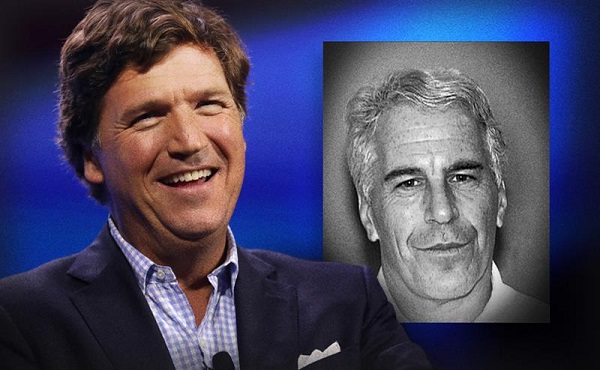
From LifeSiteNews
By Robert Jones
Pam Bondi’s shifting story and Trump’s dismissal of Epstein questions have reignited scrutiny over the sealed files.
Tucker Carlson is raising new concerns about a possible intelligence cover-up in the Jeffrey Epstein case—this time implicating U.S. and Israeli agencies, as well as Trump ally and former Florida Attorney General Pam Bondi.
During a recent broadcast, Carlson discussed U.S. Attorney General Bondi’s refusal to release sealed Epstein files, along with the FBI and DOJ announcement that Epstein did not have a client list and did indeed kill himself.
Carlson offered two theories for Bondi’s words. The first: “Trump is involved—that Trump is on the list, that they’ve got a tape of Trump doing something awful.”
But Carlson quickly dismissed that idea, noting he’s spoken to Trump about Epstein and believes he wasn’t part of “creepy” activities. He also pointed out that the Biden administration holds the evidence and would likely have acted if there were grounds.
10 Shocking Stories the Media Buried Today
#10 – Tucker Carlson has two theories why Pam Bondi won’t release the Epstein Files.
Theory #1: “Trump is involved.”
But Tucker thinks this explanation is not very likely.
That brings us to Theory #2, which is that Tucker believes… pic.twitter.com/Wy8l5NWQvZ
— The Vigilant Fox 🦊 (@VigilantFox) July 8, 2025
Carlson’s second theory: the intelligence services are “at the very center of this story” and are being protected. His guest, Saagar Enjeti, agreed. “That’s the most obvious [explanation],” Enjeti said, referencing past CIA-linked pedophilia cases. He noted the agency had avoided prosecutions for fear suspects would reveal “sources and methods” in court.
The exchange aired as critics accused Bondi of shifting her account of what’s in the files. She previously referenced “tens of thousands of videos of Epstein with children,” but later claimed they were videos of child pornography downloaded by Epstein. Observers say that revision changes the legal and narrative stakes—and raises questions about credibility.
#9 – Pam Bondi changes the story on the “tens of thousands of videos of Epstein WITH children.”
BEFORE: Tens of thousands of videos of Epstein WITH children.
AFTER: Tens of thousands of videos of child p*rn were DOWNLOADED by Jeffrey Epstein.
Credit: @Ultrafrog17 pic.twitter.com/v5I2uulyzA
— The Vigilant Fox 🦊 (@VigilantFox) July 8, 2025
Donald Trump also appeared impatient with the matter. “Are you still talking about Jeffrey Epstein? That is unbelievable,” he said in a video beside Bondi. This clip sparked backlash from longtime Trump supporters, including former Trump advisor Elon Musk, who reposted critical commentary on Trump and Bondi’s comments on X:
Musk previously alleged that Trump was himself implicated in the Epstein files. Although he retracted and apologized for this, he recently suggested that Steve Bannon was also implicated.
However, Carlson’s guest suggested that Bondi’s comments had another purpose. “The lie is a signal to everybody else involved,” he said. “The lie is not for you and me. The lie is for those implicated to say, ‘No matter what, we will protect you.’”
#7 – Guest leaves Tucker Carlson speechless with an interesting theory about the Epstein File cover-up.
“The lie is a signal to everybody else involved in the scheme that to the ultimate ends, the United States government will go to protect all of you.”
“The lie is not for you… pic.twitter.com/DWm3VwBmwF
— The Vigilant Fox 🦊 (@VigilantFox) July 8, 2025
The files in question remain sealed. It is unclear whether further revelations about Epstein will come to light, but Trump’s comments are not going to make the issue go away.
-

 Daily Caller2 days ago
Daily Caller2 days agoBlackouts Coming If America Continues With Biden-Era Green Frenzy, Trump Admin Warns
-

 Daily Caller2 days ago
Daily Caller2 days ago‘I Know How These People Operate’: Fmr CIA Officer Calls BS On FBI’s New Epstein Intel
-

 International2 days ago
International2 days agoChicago suburb purchases childhood home of Pope Leo XIV
-
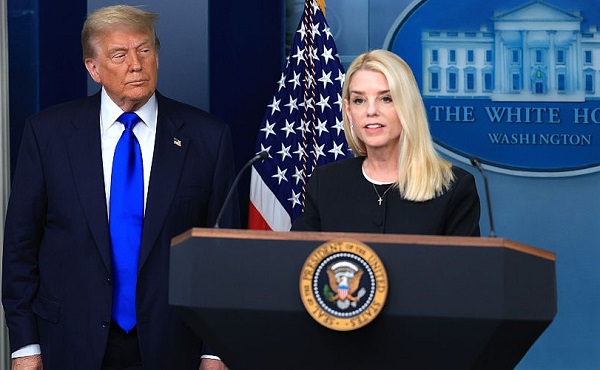
 Crime24 hours ago
Crime24 hours agoTrump supporters cry foul after DOJ memo buries the Epstein sex trafficking scandal
-
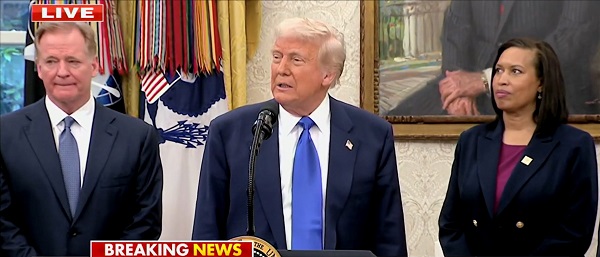
 Daily Caller23 hours ago
Daily Caller23 hours agoTrump Issues Order To End Green Energy Gravy Train, Cites National Security
-

 Daily Caller16 hours ago
Daily Caller16 hours agoUSAID Quietly Sent Thousands Of Viruses To Chinese Military-Linked Biolab
-

 Addictions16 hours ago
Addictions16 hours ago‘Over and over until they die’: Drug crisis pushes first responders to the brink
-

 Business1 day ago
Business1 day agoPrime minister can make good on campaign promise by reforming Canada Health Act











